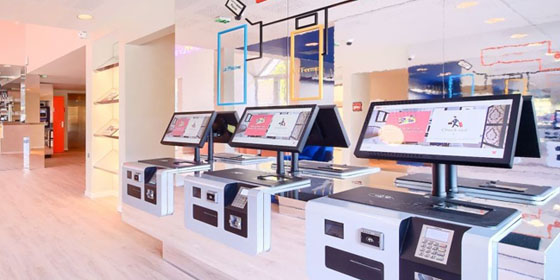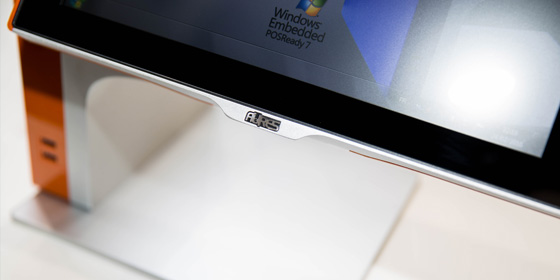At a time when retail revenues and margins feel like they’re under unprecedented assault from all angles, it’s only natural that businesses should look for ways to diversify their income streams.
It’s in this context that retail media has quickly taken on the mantle of a cure-all for all retail’s woes. Retail media is a form of advertising that monetizes various ‘spaces’ owned by retailers. It started out as an online phenomenon, with Amazon leveraging it’s mammoth digital presence to create an advertising network that was soon rivalling the likes of Google and Facebook.
But what’s unique about retail media is that physical retailers have been able to follow in their digital cousins’ footsteps. To make a retail media network successful, you need two key things – customer data to drive ad targeting for paying advertisers, and somewhere to display the ads. For physical retailers, the latter takes the form of in-store screens, whether on kiosks, customer-facing POS displays, or ambient screens around the store.
With retail media spending growing at twice the rate of social advertising, the scale of the opportunity is too big for anyone to ignore. But what do store owners need to know about retail media? What do you need to do to get started?
What’s the value proposition for physical retailers?
What makes retail media so attractive o all retailers, physical and digital, is the astonishing margins on offer. According to BCG, retail media advertising can hit margins of up to 90%. Compare that to the 3-4% margins that retailers typically trade on, and you don’t need any further explanation about why retailers are clamouring to cash in.
The reason for these sky-high margins is that retail media advertising has very low overheads. Most stores already have digital screens around their premises these days. You just need to add some software (readily available and low cost via the cloud) that manages the creation and display of ads on those screens. And, of course, digs into your customer data to pull out the insights that determine what ads to display, when.
This is another part of the value proposition for retailers. Retail media monetizes the data that every business holds on its customers. Advertisers pay because retail media delivers targeted and contextually relevant ads close to the point of purchase. That makes the conversion rate for on-site retail ads high. And that conversion rate is driven by the data.
Practical steps for implementing in-store retail media
As already hinted, the first step to getting started with digital media is having screens in place to display advertisements on. Kiosks, POS displays, on-shelf digital signage – anything you already have can be used. Though once you calculate the potential ROI from launching in-store advertising, you may decide it’s well worth your while to invest in more screens. A growing trend, for example, is having screens in window displays solely for the purpose of retail media.
Next, you need to get your data collection and management right. Your store already collects vast amounts of first-person customer data. This takes the form of sales and purchase data, loyalty scheme data, anything you do to monitor customer behaviour like footfall measurement and heat mapping. All of this can be used and monetized through retail media. But you have to collect and aggregate it in the right ways so it can be used efficiently and effectively. This might mean investing in new data streaming and management platforms, as well as a more advanced CRM to create high quality customer profiles.
Then the final piece of the puzzle – selling your retail media services. This requires thinking like a traditional (and digital, for that matter) advertising vendor. You will need to work out your advertising rates and packages, put together a media pack, and start promoting your services. You can start out by speaking to the brands and suppliers whose goods you sell. But longer term, you might want to look further afield. This is also an effective way of refreshing your product roster by building relationships with new suppliers.
Final thoughts
Not only does retail media offer store operators a very welcome alternative source of revenue, it also signals how the balance between physical and digital retail is starting to be redressed after two decades of explosive digital growth. The more digitized stores become, the more they’re able to take the baton of eCommerce’s obsessive focus on customer experience and add their own flavors, the more obvious physical retail’s enduring value is to see. In-store retail media puts a price on that value.




